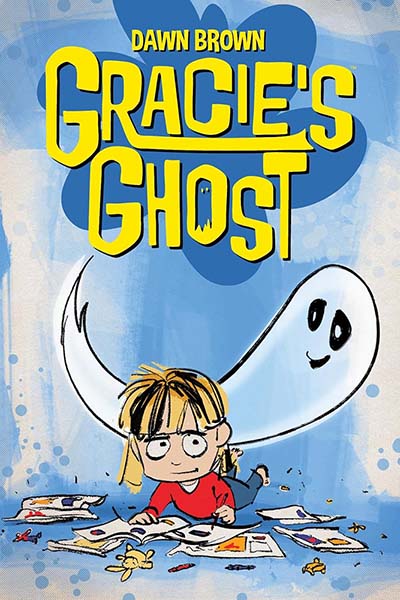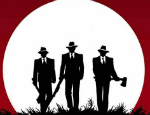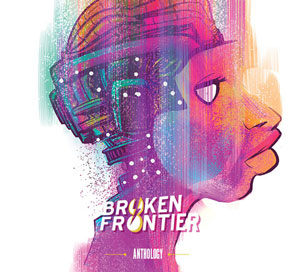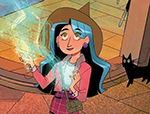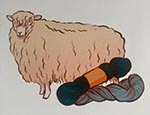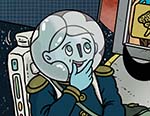One of the main themes of Gracie’s Ghost is bullying. “Every day,” says the Afterword at the end of the book, “we have the chance to decide what kind of person we want to be. Choosing to be kind means treating others with respect, patience, and empathy.”
But the book as a whole does something a bit more complex than just illustrating this moral. It opens with a dialogue between a female ghost and some kind of higher deity. The higher deity is explaining to the ghost that she can only become a guardian angel if she can demonstrate that she has helped somebody. So, she tells the story of her relationship with a girl called Gracie.
There is an obvious parallel to the opening scene of Frank Capra’s film It’s a Wonderful Life, in which a second-class guardian angel, Clarence Odbody, is given the chance to “earn his wings” by helping the despairing George Bailey to see the value of his own life. But interestingly, the “higher power” to which Gracie’s ghost is talking has a black silhouette with distinctly bat-shaped wings – in other words it resembles the Devil rather than God or an archangel. And as the story of Gracie and her ghost unfolds, we don’t always get the impression that the ghost is particularly holy; she sometimes gives questionable advice, sometimes promises to help but fails to do so, and often seems simply powerless to prevent Gracie’s misfortunes. We’re in a morally ambiguous world where bad things keep happening to Gracie through no fault of her own, and there are no obvious solutions. What Gracie’s ghost does offer, however, is companionship and encouragement, without which Gracie might really struggle to get through all her difficulties.
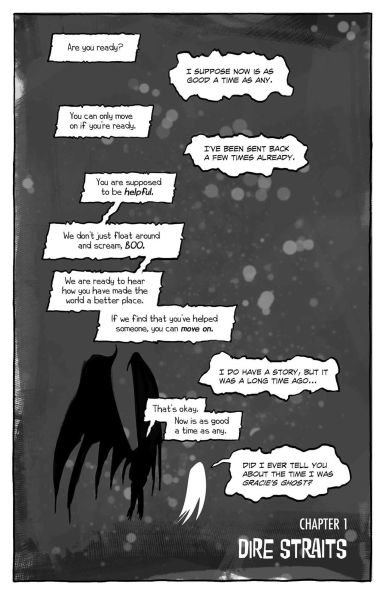
The comic is drawn in an agreeably loose and sketchy style, black and white with grey half-tones; the figure-drawing is simple, backgrounds are sparse, and unnecessary detail kept to a minimum; but when more detailed drawing is required (such as a car, a shop interior, or a maple tree), it’s accomplished with considerable technical skill. Occasionally there are echoes of Charles M. Schulz’s Peanuts cartoons – especially when we see Gracie at school, in a side-on row of desks with one kid behind her and another in front, but also in the short anecdotal sections through which the story is built up.
The book is divided into four chapters, but each chapter contains a number of shorter incidents – ‘Softball’, ‘The Lake’, ‘Boobies’, etc. A lot of the material has an autobiographical feel. Gracie is attending a Catholic school, and the other kids pick on her. They call her “turd”, think she’s weird, laugh at her and push her over, and the boy who sits behind her in class shoots spitballs into her hair. But she clearly has some artistic talent: she can occasionally get the other kids off her back by drawing AC/DC and Rolling Stones logos for them.
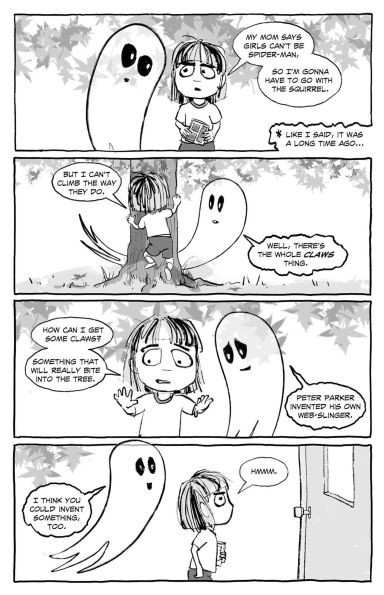
At home, her mom (who apparently spends most of her life on the sofa) keeps telling her off for wanting to do things that are inappropriate for girls. Her little brother is allowed to do and have more or less whatever he wants. The dad is more encouraging and sympathetic, but (a bit like the ghost) he seems almost powerless to help her. He gives her some big empty cardboard boxes, from which she builds herself a castle which becomes her private refuge – “Let her have this” he pleads to the disapproving mom – but in the end the mom throws all the boxes in the garbage.
This is one of the points at which the ghost is able to offer Gracie some real help. “I don’t want to do this any more,” she says. “I want to be a ghost with you” – a hint that she’s starting to feel suicidal. But the ghost cheers her up by telling her the story of how she came to be dead (falling down a manhole), then advising her that she can’t hide in a cardboard box for the rest of her life – “Keep moving until you find your people and your place”. She also encourages Gracie to write down her experiences, which leads her to start creating comic books. In fact she creates one called Gracie’s Ghost – “I’ll share it when the time is right”, she promises.
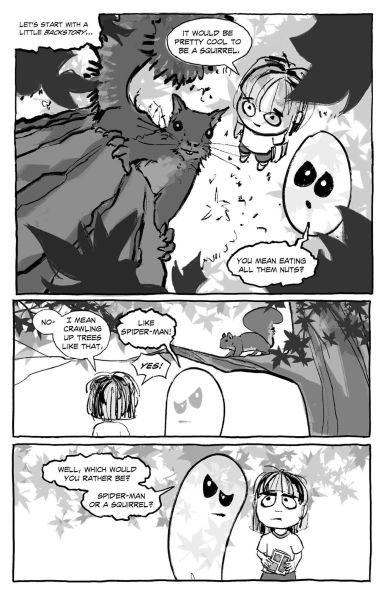
One of the things that makes Gracie’s Ghost seem autobiographical is the fact that it’s clearly set a few decades ago. There are no mentions of social media, for example; and any kid being bullied at school these days is likely to be victimised online, just as much as in the playground or the classroom. But that doesn’t make the story irrelevant – in fact the way its autobiographical tone gives it the ring of authentic experience. Kids’ books which deal with bullying often end by showing the bullies learning the errors of their ways and/or turning out to be not so bad after all. Gracie’s Ghost is more about finding a way to cope with the tough times, and because it doesn’t attempt to solve everything or tie everything up too neatly, it offers us a viewpoint that we feel we can trust.
Dawn Brown (W/A) • Image Comics, $12.99
Review by Edward Picot





